Antioxidants in Horse Nutrition-Vitamin E
Most people have heard that anti-oxidants are important for health but few really know what they are or what they do. Anti-oxidants fight free radicals. So what are free radicals? Healthy cells are made up of molecules that have an even number of paired electrons. Free radicals are very unstable, reactive molecules that end up with an odd, unpaired electron so they try to “steal” an electron from more stable molecules. This sets up a chain reaction that continues to produce more and more free radicals. The immune system may utilize free radicals to neutralize viruses and bacteria, so in some cases free radicals can be helpful. But, when free radical production becomes excessive, damage to cells and body tissues can occur. Free radical damage occurs with age, stress and environmental pollution. Unchecked, free radicals in the system cause wear-and-tear on organs and body functions. Anti-oxidants such as vitamins A, E and C and the mineral selenium are thought to protect the body against the destructive effects of free radicals. These anti-oxidant compounds donate one of their electrons to the free radicals, stopping electron “stealing” reactions. Anti-oxidants act as free-radical scavengers, helping to prevent cell and tissue damage.
Vitamin E is the most abundant fat-soluble antioxidant in the body. The concentration of naturally occurring vitamin E activity varies considerably in typical feeds used for horses. Fresh forages and immature harvested forages
contain the highest concentrations of vitamin E activity, ranging from 15 – 50 IU/lb. Grains, such as oats and corn tend to have lower concentrations, from 10 – 15 IU/lb. Vitamin E content declines over time in stored grains and
hay. For example, vitamin E in alfalfa stored for 12 weeks has been reported to decline 54 – 73 percent. Vitamin E intake will be extremely variable in typical, unfortified diets for horses. Therefore, choosing a formulated feed that is fortified with vitamin E will ensure adequate vitamin E intake. Fortification may be accomplished with synthetic or natural vitamin E sources. The natural source, alpha-tocopherol, is more readily absorbed and is more effective at improving vitamin E status in the body, but is usually more unstable than synthetic sources.
According to the National Research Council (NRC) Nutrient Requirement of Horses, the vitamin E requirements for horses have not changed since the NRC was last published in 1989. For a mature horse at maintenance the
requirement is reported to be 0.45 IU vitamin E/lb of body weight, which is 500 IU/day for an 1100 lb horse. The vitamin E requirement for pregnant and lactating mares is 0.9 IU/lb of body weight, or 990 IU/day for an 1100 lb
mare. Growing horses should also consume 0.9 IU of vitamin E per pound of body weight, or 540 IU/day for a 600 lb weanling.
Mature exercising horses need between 0.72 and 0.9 IU/lb of body weight per day, depending on the workload. This calculates to 792 IU/day for an 1100 lb horse doing light work, to 990 IU/day for the same horse doing very
intense exercise. Some research suggests that very hard working horses, such as those running endurance races, might benefit from dietary vitamin E levels as high as 5000 IU/day. This has not been well duplicated in other
studies, but there are no reported adverse effects to intakes in that range. Most research supports the recommendation of 0.9 – 1.0 IU of vitamin E per pound of body weight for hard working horses. But, for horses
exhibiting some muscle stiffness or elevated muscle enzymes in blood work, the higher level may be of some benefit.
A diet of fresh pasture containing 50 IU/lb of vitamin E activity would well meet the vitamin E requirements of all horses mentioned, except possibly for those doing very intense exercise that may benefit from higher than normal recommended levels. However, when you harvest that pasture for hay or buy hay that has been stored for awhile, the vitamin E activity is greatly reduced. A horse eating fresh alfalfa hay will usually consume adequate vitamin E, but if hay is very mature when it is cut, or is stored for an extended period, another source for vitamin E may be necessary. Well-fortified commercial feeds should contain adequate amounts of tocopherols to meet the vitamin E requirements, even when the forage is not contributing a significant amount. Caution should be taken when adding a vitamin E supplement to a well fortified concentrate because most vitamin E supplements also contain selenium. It is possible to over-supplement selenium to the point of causing harm, so contact your veterinarian or an equine nutritionist for help in determining if you need additional vitamin E supplementation and if the supplement you are using is safe to use with your current ration.
by Karen E. Davison, Ph.D., Manager-Equine Technical Services, Purina Mills, LLC
